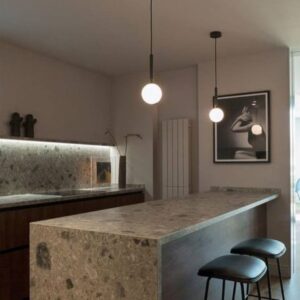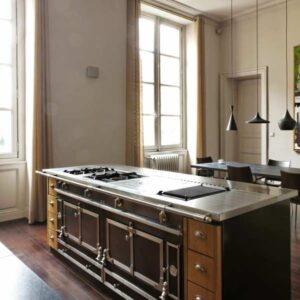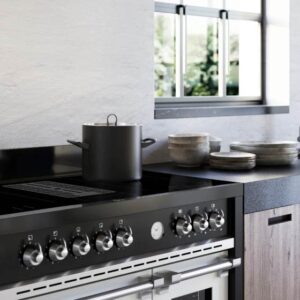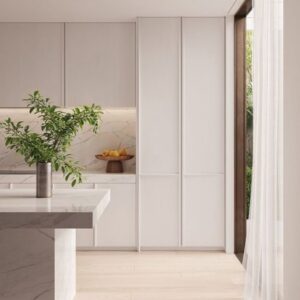Organic interior design: what is it? How to create a home with ‘organic’ design?
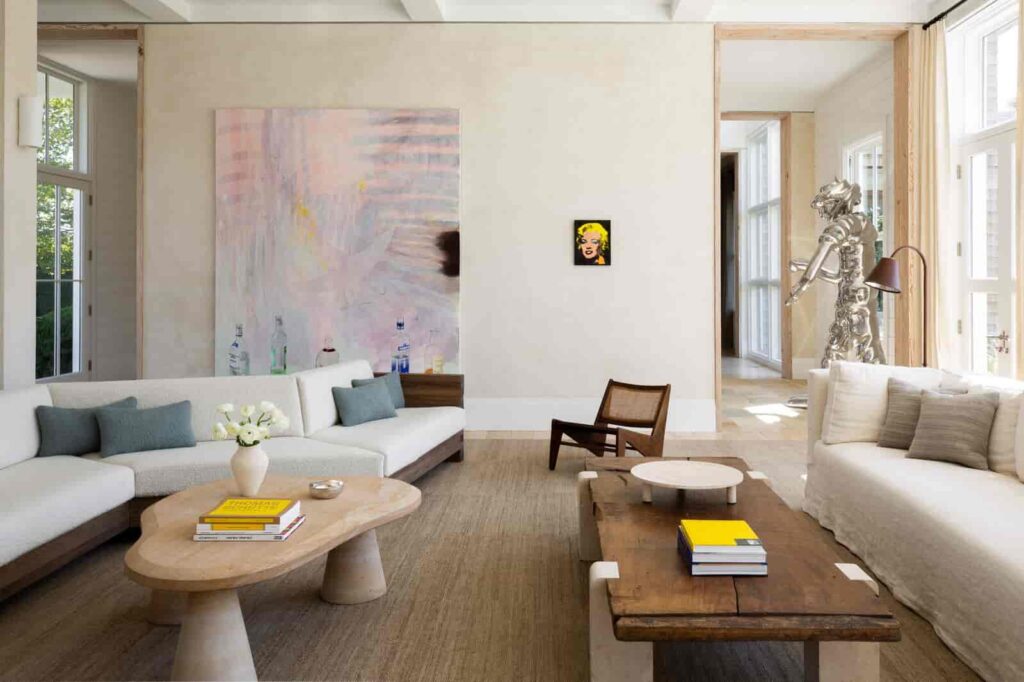
So-called organic interior design has recently been rediscovered and is one of the hottest trends of the moment. What is it all about? In a nutshell, the discipline is based on the idea that interior design should be related to and in harmony with nature.
This principle guides the choice of furnishings throughout the home, indoors and outdoors, and ties in perfectly with interior design solutions that seek out furniture, complements and accessories of natural and sustainable origin.
What is meant by organic interior design?
The concepts behind modern organic interior design are not a recent discovery. In fact, the first successful experiments date back about a century and are mainly related to architecture. First Frank Lloyd Wright’s contribution and later Art Nouveau solutions were the origin of what is now called organic design.
When we speak of organic interiors, we are referring to a style of interior design that seeks materials and forms that establish a dynamic balance and profound harmony between people and the natural environment. In this particular style, nothing is left to chance: furniture and accessories have functional lines and are made of sustainable materials. At the same time, balance and harmony are also sought between the lines of the furniture and its function.
As we have already indicated, the main protagonist of this interior design is nature. It is from it that inspiration is drawn to define the forms and modes of operation of the various furniture components. It is easy to see that organic design involves every aspect of design: it not only concerns the choice of materials and the arrangement of furniture and accessories, but also influences the structure of furniture, the organisation of outdoor spaces, the choice of bathroom fittings and fixtures, and so on. Every smallest aspect of the furniture is given attention by the designer specialising in ‘organic’ interiors.
Basically, the idea behind organic interior design is that, when designing our homes, we should take as a reference point and replicate, as far as possible, the perfection that characterises the natural world. The combination of functionality and aesthetic care gives rise to efficient and luxurious interiors that guarantee a high level of well-being.
Organic interior design ‘naturally’ ties in with organic architecture and achieves the best results when interior designers and architects work together and share the same project vision.
What to consider if you want to design furniture in an organic style?
When designing furniture in the organic style, great attention must be paid to finding the shapes, materials, colours and styles of furniture that are most functional in achieving the desired goal. The aim is to create a harmonious result between the different furniture components and between the interior design and the external environment.
One of the ideas behind organic design in interior design is that the space one inhabits is not isolated and separate from the rest of the environment (outside the home). On the contrary, the various rooms in the house are related to their surroundings, and in order to breathe in an atmosphere that evokes feelings of relaxation and well-being, the role of the surrounding nature must not be underestimated. The four elements – air, earth, water and fire -, together with the architecture designed by mother nature, are more or less evident presences in all organic design projects.
When designing furniture, one must therefore study the characteristics of the outdoor space and understand how the building fits into its natural surroundings.



What are the principles to be followed when defining an organic furniture design?
The quest for well-being is one of the cardinal principles on which organic interior design is based. Well-being is pursued through the use of functional and minimal furniture, the exploitation of natural light sources and the use of materials as closely related to the environment in which one finds oneself. In this sense, it is preferable to have large, open-plan rooms and to avoid the use of many different materials within each space.
Another principle closely linked to the organic design philosophy is of course sustainability. Using materials of natural origin and favouring locally sourced wood and stone is a choice in line with the founding idea of organic design and, at the same time, reduces the environmental impact of furniture choices.
Equally important is ensuring that the furniture is energy efficient. Whereas in the 1920s, when organic interior design made its debut, this issue was not a priority, today it is of paramount importance. From this point of view, home automation systems can be introduced that regulate the amount of light in the home, sensors that optimise temperature and air quality, and systems that ensure the most efficient use of energy.
Choose a top-notch woodworking shop.
We have over 50 years of experience! Contact Us
Il Piccolo, a second-generation family-run joinery, opens its own showroom in Lugano. With over 50 years of experience, Il Piccolo brings with it a wealth of technical and design knowledge of the highest level, thanks to the numerous interiors designed and furnished throughout the world. In addition, Il Piccolo represents the most prestigious brands of furniture worldwide. Il Piccolo designs, produces and sells the best of the interior design made in Italy, following the customer from the design to the realization, delivery and installation of the work, integrating the process with a precise and professional assistance service. CONTACT US!
